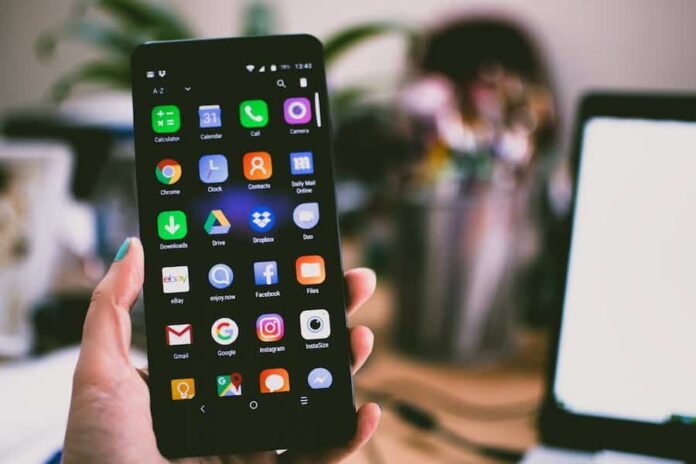Sending pictures through text messages on Android should be a seamless and convenient process, but for many users, it can become an unexpected challenge. Whether it’s a memorable photograph, an important document, or just a quick snapshot, the ability to share images via text messages is fundamental to modern communication. However, when this seemingly simple task becomes impossible, frustration sets in. In this article, we will delve into the common reasons behind the “Why can’t I send pictures through text on my Android?” dilemma, offering insights into troubleshooting and solutions to help Android users overcome this vexing issue and ensure their picture messaging experiences remain smooth and hassle-free.
Why Can’t I Send Pictures Through Text On My Android?
There could be several reasons why you can’t send pictures through text on your Android device, such as insufficient storage, network connectivity issues, misconfigured messaging app settings, file size limitations, or incompatible file formats. Troubleshooting and adjusting settings should help resolve these problems and ensure successful picture messaging.
Common Reasons Why You Can’t Send Pictures Through Text On Android
Several common reasons can prevent you from sending pictures through text on your Android device:
- Insufficient Storage: Low storage space can hinder picture messaging.
- Connectivity Issues: Poor mobile data or Wi-Fi connections can disrupt the process.
- Messaging App Settings: Misconfigurations in messaging apps may block picture sending.
- File Size Limitations: Large image files may exceed messaging app limits.
- Incompatible Formats: Unsupported image formats can cause issues.
How To Convert Or Save Images In Compatible Formats?
Converting or saving images in compatible formats for text messaging on Android is a straightforward process. Follow these steps:
- Select The Image: Choose the image you want to send and locate it on your device.
- Use An Image Editing App (If Needed): If your image is in an unsupported format, you may need to use an image editing app. There are various apps available on the Google Play Store for this purpose. Download one if you don’t already have one installed.
- Open The Image In The App: Open the image editing app and import the image you want to convert.
- Choose The Format: In the app, look for an option to change the format or save the image in a different format. Commonly supported formats for text messaging include JPEG and PNG.
- Adjust Settings: Some image editing apps may allow you to adjust compression settings or image quality. Ensure the settings are suitable for your needs.
- Save The Image: After making any necessary adjustments, save the image in the desired format. Be sure to remember where it’s saved on your device.
- Send The Converted Image: Go to your messaging app, create a new message or open an existing conversation, and attach the newly converted image. It should now be sent without any format-related issues.
How To Maintain Picture Quality While Reducing File Size?
Maintaining picture quality while reducing file size is essential to ensure that your images look good without consuming excessive data or causing problems when sending via text. Here are some tips on how to achieve this balance:
- Choose The Right Image Format: Use formats like JPEG for photographs and PNG for images with transparent backgrounds. These formats offer good quality and compression options.
- Reduce Image Dimensions: Resize the image to a smaller dimension while maintaining the same aspect ratio. Smaller dimensions automatically reduce file size without significant loss of quality.
- Adjust Compression Settings: For JPEG images, use the “Quality” or “Compression” settings to reduce the image’s quality slightly. Experiment with different settings to find the right balance between quality and file size. For PNG images, consider using tools that offer lossless compression, like PNGGauntlet or TinyPNG. Use Image Editing Software: Professional image editing software like Adobe Photoshop or free alternatives like GIMP allows you to fine-tune compression settings and maintain better quality during compression.
- Crop Unnecessary Parts: Crop the image to remove any unnecessary elements, which can reduce file size without affecting the main subject’s quality.
- Use Online Compression Tools: Various online tools like Compressor.io, ImageOptim, or TinyJPG/TinyPNG can compress images while preserving quality. Simply upload your image, and these tools will optimize it for you.
- Save Images At The Right Resolution: Ensure that your images are saved at an appropriate resolution for the intended use. For example, web images can be saved at 72 DPI, while print-quality images should be at 300 DPI.
- Consider Progressive Loading: For web use, use the progressive loading option for JPEG images. This allows the image to load in stages, starting with a low-quality preview and gradually improving as it loads fully.
- Batch Process Images: If you have multiple images to resize and compress, consider using batch processing tools or scripts to apply the same settings consistently.
- Review Before Sending: Always review the image after compression to ensure that the quality is acceptable for your needs. If it looks pixelated or distorted, consider adjusting your compression settings.
Alternatives To Traditional Picture Messaging
There are several alternatives to traditional picture messaging on Android devices, offering diverse ways to share images and multimedia content:
Instant Messaging Apps:
- WhatsApp: Send pictures, videos, and documents to contacts or groups.
- Facebook Messenger: Share images and videos with Facebook friends.
- Telegram: Offers cloud-based file sharing for multimedia files.
- Signal: Known for its strong encryption, it allows secure multimedia sharing.
Email:
Attach images to email messages and send them to recipients. Most Android devices have native email apps for this purpose.
Cloud Storage Services:
Upload images to cloud services like Google Drive, Dropbox, or OneDrive and share links with recipients. Offers efficient storage and easy sharing with a broader audience.
Social Media Platforms:
Post images on platforms like Instagram, Facebook, Twitter, or Snapchat and share them with your followers or friends. Offers an interactive and social way to share photos.
File Transfer Apps:
Use apps like SHAREit, Xender, or Files by Google to transfer files, including images, between Android devices quickly.
Link Sharing Apps:
Apps, like Send Anywhere allow you to send images via links that recipients can open to download the files. Offers a hassle-free way to share large images.
Bluetooth:
Share images with nearby Android users using Bluetooth file sharing.
QR Codes:
Generate QR codes for images and share them. Recipients can scan the code to access and download the image.
Screen Sharing Apps:
Apps like TeamViewer or AnyDesk enable real-time screen sharing, allowing you to display images to another user.
Print And Share:
Print the image and share it physically with others. Many Android devices support wireless printing.
Video Calls:
During a video call using apps like Zoom, Google Meet, or Skype, you can share your screen and show images to others.
MMS Via Carrier Services:
If traditional picture messaging is not working, contact your carrier for assistance or explore alternative messaging apps that use different protocols.
Conclusion
In conclusion, while facing the frustrating question of “Why can’t I send pictures through text on my Android?” can be exasperating, understanding the common reasons and troubleshooting methods can resolve the issue. Whether it’s optimizing image formats, adjusting settings, or exploring alternative sharing methods, there are solutions at your disposal. Maintaining picture quality while reducing file size is possible with the right techniques. Remember to stay informed about software updates and seek support when needed. Ensuring a smooth picture messaging experience on your Android device is within reach with these insights and solutions at hand.
FAQ’s
Why Can’t I Send Pictures Through Text On My Android?
Common reasons include low storage, connectivity issues, app settings, file size limits, and incompatible formats. Troubleshooting can resolve these issues.
How Do I Convert Images To Compatible Formats?
Use image editing apps or online tools to convert unsupported formats to common ones like JPEG or PNG.
How Can I Maintain Picture Quality While Reducing File Size?
Resize images, adjust compression settings and choose the right format to strike a balance between quality and size.
What Are Alternatives To Traditional Picture Messaging On Android?
Options include instant messaging apps, email, cloud storage, social media, file transfer apps, and more.
Why Should I Stay Updated With Android Software?
Updates often include bug fixes, which can resolve picture messaging issues. Keeping your device updated is essential for optimal performance.





